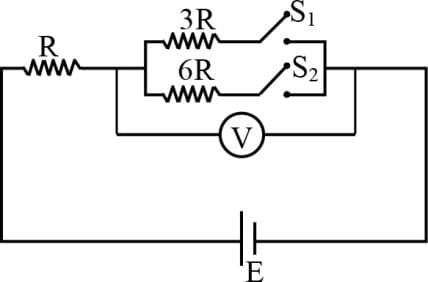Kirchoff’s Law
Kirchoff’s Law: Overview
This topic covers concepts, such as, Kirchhoff's Law, Kirchhoff's First Law, Short-circuiting & Earthing in Electric Circuit etc.
Important Questions on Kirchoff’s Law
Which of the following rule may be used to obtain the values of the three unknown currents in the branches (shown) of the circuit given below?
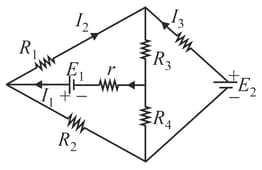
Apply Kirchhoff’s rule to the loops and to find currents and in the network.
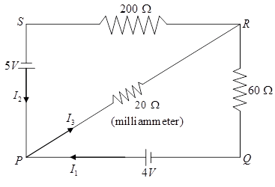
Apply Kirchhoff’s rules to the loops and to write the expressions for the currents and in the network.
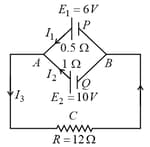
State Kirchhoff’s rules. Use these rules to write the expressions for the currents and in the circuit diagram shown.
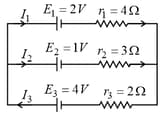
Two cells of emf and and internal resistance and respectively are connected in parallel to pass a current in the same direction through an external resistance of .
Using Kirchhoff’s laws, calculate the current through each branch of the circuit and potential difference across the resistor.
A current of flows in the circuit as shown in figure. The value of potential difference between the points and will be
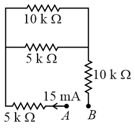
A battery of internal resistance is connected to the network of resistances, as shown in the figure. In order that the maximum power can be delivered to the network, the value of in should be
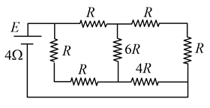
In the circuit shown in the figure. , is a variable resistance
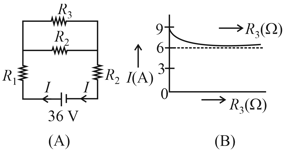
As the value is changed, current though the cell varies as shown. Obviously, the variation is asymptotic, i.e. as . Ratio of resistances will be:
Consider the circuit shown in which the batteries are assumed to have negligible internal resistance.
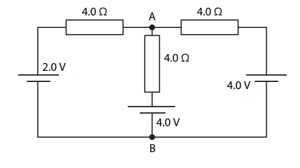
Determine the total power supplied by the middle cell.
Consider the circuit shown in which the batteries are assumed to have negligible internal resistance.
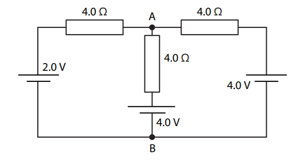
Determine the potential difference between A and B.
Consider the circuit shown in which the batteries are assumed to have negligible internal resistance.
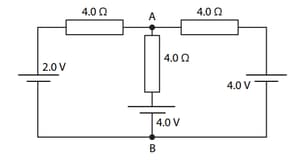
Calculate the magnitude of the current through the middle cell.
Consider the circuit shown in which the batteries are assumed to have negligible internal resistance.

Calculate the magnitude of the current through the left cell.
In the circuit shown, what is the approximate current passing through the resistor ?
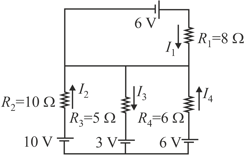
For the given figure, identify the relation between currents according to
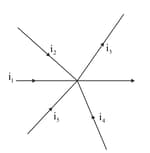
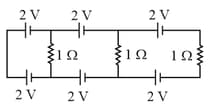
In the above circuit the current in each resistance is:
The reading of ideal ammeter in the circuit is
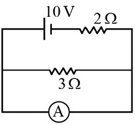
In the circuit shown, the reading of the Ammeter is doubled after the switch is closed. Each resistor has a resistance and the ideal cell has e.m.f. Then the ammeter has a resistance (in ) equal to
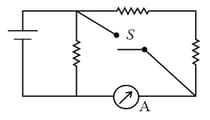
As the switch is closed in the circuit, the current passed through it is (in )
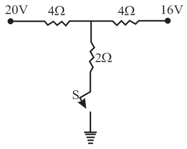
Four resistances and make the arms of a quadrilateral Across is a battery of emf and internal resistance negligible. The potential difference across in is __________ .
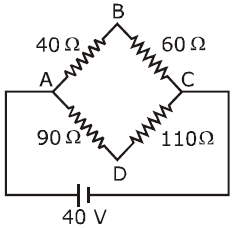
In the circuit shown in the figure, reading of voltmeter is when is closed, reading of voltmeter is when only is closed and reading of voltmeter is when both and are closed. Then -
